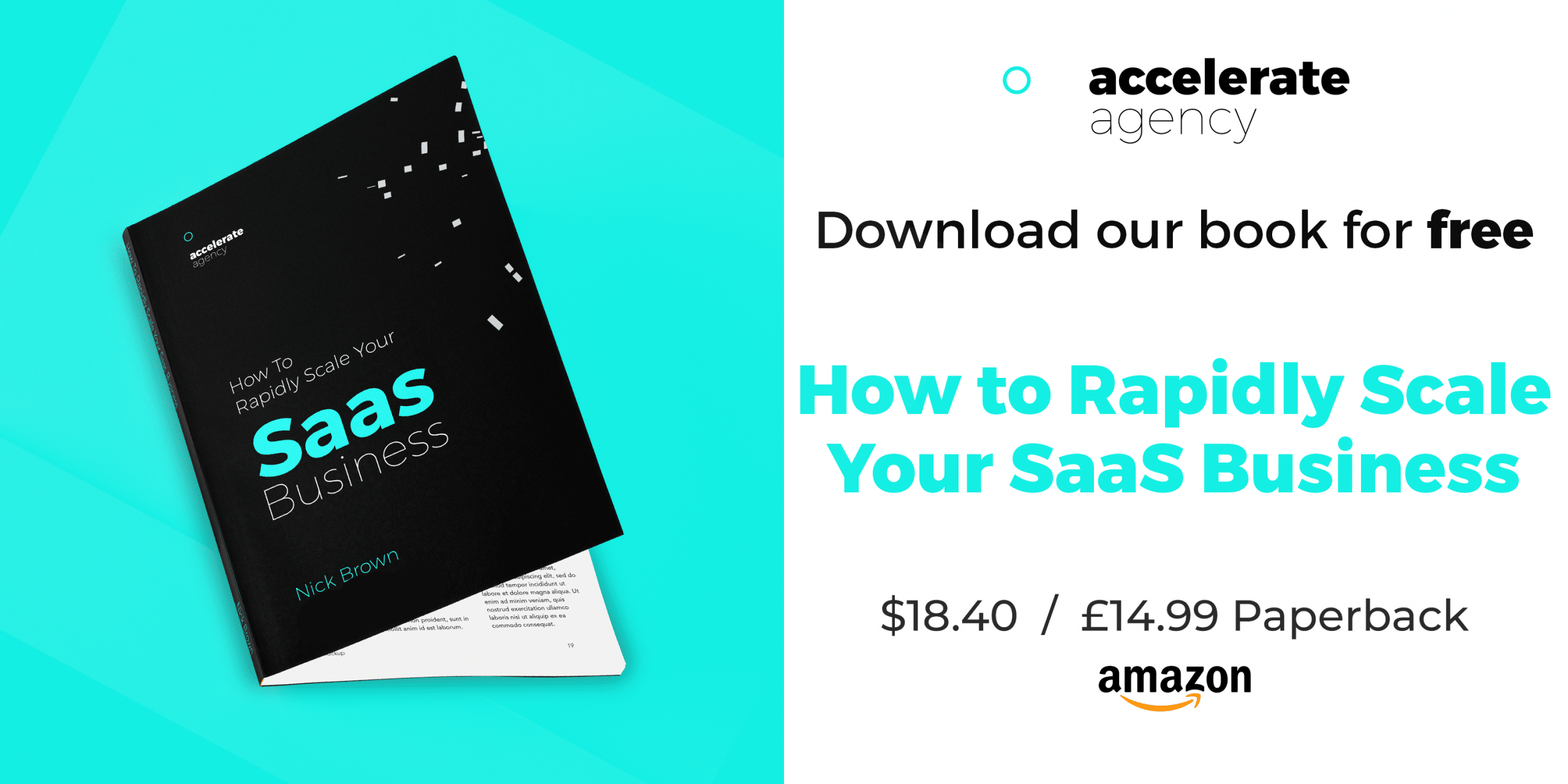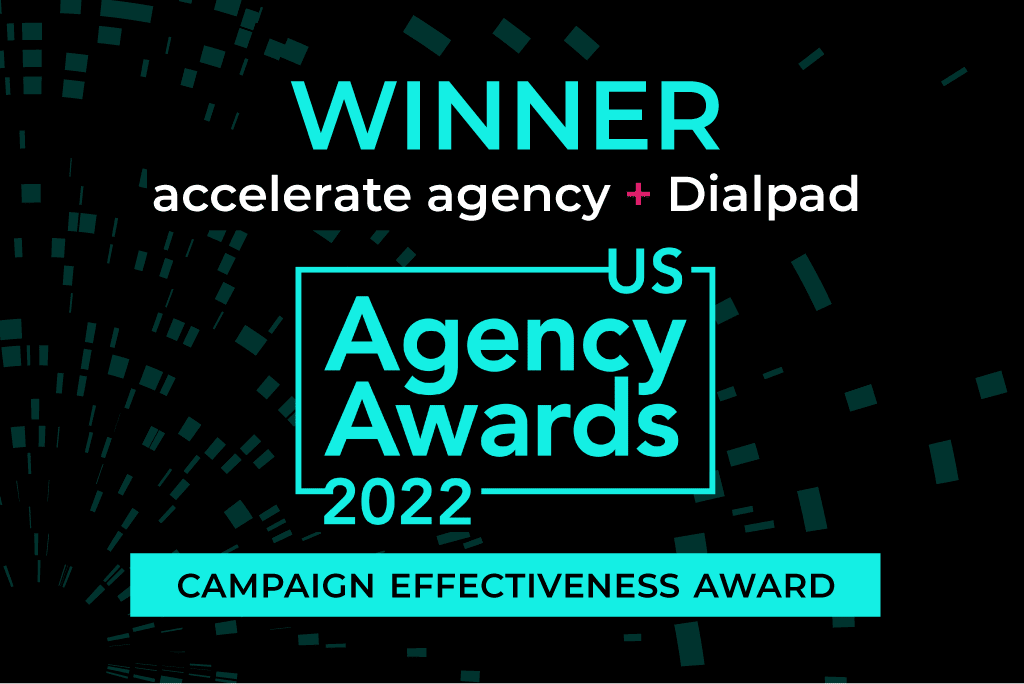How to use LinkedIn to boost your SEO and get results
There’s a good chance if you are reading this that you have a LinkedIn account. Whether you really know why you’ve got one is another matter. Many people join LinkedIn because they like the idea of a social network for professionals. Others do so because they’ve been asked or told to somewhere along the way.
However, whatever the reason, what’s clear is that most users fail to make the most of the platform. They join the network, fill in their profile and that’s the end of the matter. The only time they might think about LinkedIn is if they get an email telling them that someone’s joined their network. More often than not, that might be an old school friend. If not, it may be an overzealous salesperson or recruiter.
Book a Consultation
If you’re a site owner or run a business, you might be missing out on some great opportunities afforded by LinkedIn. The social media platform can form a vital plank of your SEO efforts. Done right, using LinkedIn to boost your SEO can deliver notable results. What’s more, using LinkedIn doesn’t have to cost you a penny. That’s great news when you consider how much SEO can cost.
In this post, I’m going to cover the best ways you can use LinkedIn to boost your SEO. I’ll go into depth on how we use the platform at Accelerate and the results we’ve seen. These are the processes we’re going to cover:
- Leveraging LinkedIn to increase branded searches
- Promoting content and encouraging engagement via LinkedIn
- Effective LinkedIn communication and relationship building
Let’s get started.
How You Should Be Looking at LinkedIn
LinkedIn is best described in two parts. Firstly, it is a large community of professionals. Professionals from many countries, niches, and businesses. As you can see from the image below, both individual users and businesses have profiles. It’s a place for all kinds of professionals to come together.
As well as that, LinkedIn also works as a kind of search engine. It gives users the ability to search for and connect with other professionals. You can use the search function to find people with certain job titles. You can set up or join groups devoted to particular fields or topics. You can even search for people by name or by company.
Viewed in that context, LinkedIn allows you to build relationships and forge partnerships. The platform allows you to improve your link building and encourages a greater volume of searches for your brand. In short, LinkedIn can help boost your SEO and so build your brand.
This is how we’ve leveraged the power of the platform. By sharing our experience, we’re going to teach you how you too can use LinkedIn to boost your SEO.
Leveraging LinkedIn to Increase Branded Searches
Branded searches on Google are searches that include a business name or brand name. A branded search for ourselves might be something like ‘Accelerate Agency digital marketing’. That’s because we’re a Bristol digital marketing agency.
The first way we use LinkedIn to boost SEO is by increasing the number of people visiting the site. The way we do this is pretty simple. We just rinse and repeat the following three steps:
- Grow LinkedIn connections little by little each day
- Withdraw requests to those who don’t connect
- Encourage connections to engage with content created for the site
If you can do this third step enough you will start to see an increase in branded searches associated with your company.
There are lots of ways to grow your network on LinkedIn. One of the simplest and most effective is by using the platform’s search feature. We’ve found that searching for a specific job title is a great way to find relevant people to connect with.
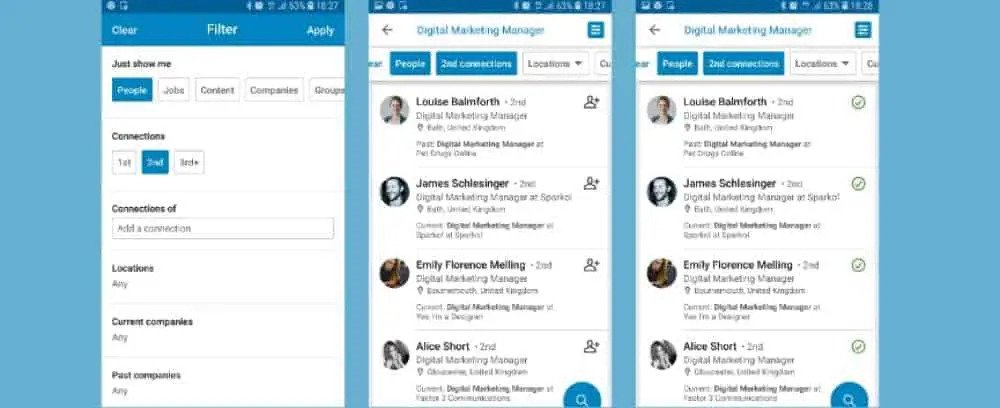
In our case, a possible connection would be ‘Digital Marketing Manager’. You could choose any title related to your own niche. We then used the LinkedIn search filters to refine our search. We limited the search to ‘people’, rather than ‘jobs’, ‘content’ or other categories. That way we were sure to find individuals who described themselves as digital marketing managers.
Another handy filter you can use is to limit results to second level connections. These are people you aren’t yet connected to, but who are connected to one of your current connections. This is very useful. People are more likely to accept a request from a profile already connected to someone they know.
So that’s how you identify people to reach out to. Of course, many people will not accept your requests. This is natural. Some people don’t like to make new connections. And then there are all those people who don’t really use LinkedIn.
Given this is the case, the next step of the process is to deal with those requests that aren’t answered.
After a certain period of time (we use four weeks), you want to remove the contact details of people who have not responded to your inquiries. Withdrawing the requests frees you up to send out different ones.

Ideally, you want your LinkedIn to reflect the diversity of your business interests. Your connections should be a mix of industry peers and ideal customers. You can and should choose lots of different job titles and terms to search for. That way you can build your connections little by little, every day and see a significant result in no time. By this method, I went from having just 300 connections to close to 29,000 in six months.
Promoting Content & Encouraging Engagement Via LinkedIn
As the number of your LinkedIn followers grows so can your reach. If you are using your LinkedIn to boost your SEO you want to get people onto your site. The best way that I’ve found to do this is by regularly posting articles and blog posts through my account. We recently used LinkedIn to help us produce and promote a piece of content for our blog. How we did it and the positive results we saw, offer a prime example of how useful a tool LinkedIn can be for SEO.
As you would expect, our blog is devoted to providing useful information about SEO and analytics. This is something that we want to be known for, and so we’ve developed a content marketing strategy that supports this goal. After performing some keyword research, we identified Top Google Analytics Tools as a suitable topic for a post.
We turned to LinkedIn.
We shared our intention to write the post with our LinkedIn network. We initially compiled a list of tools that we find useful in-house. We then shared this list of tools through LinkedIn and asked for suggestions.

A lot of people engaged with the content, with many suggesting tools that we had overlooked. This helped us compile a great list of tools. A side benefit of this strategy is that it generated some hype for the content prior to publication. Anyone who put in a suggestion would be far more likely to read the ultimate post, once it was published.
Our LinkedIn post announcing the upcoming content got loads of responses.
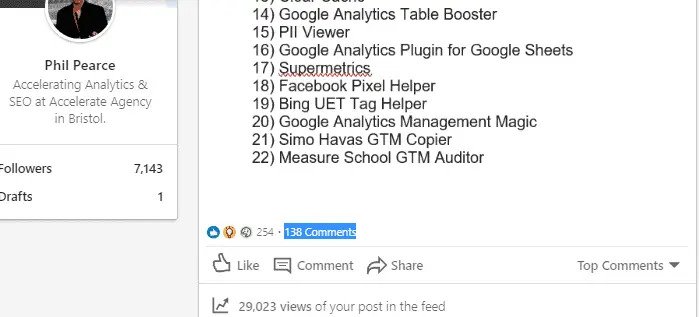
Once the content was written and live on our blog, we set to work promoting it. As well as other channels, we used LinkedIn to get the word out about our post. We shared links to it and made sure to promote it via various digital marketing and Google Analytics LinkedIn groups
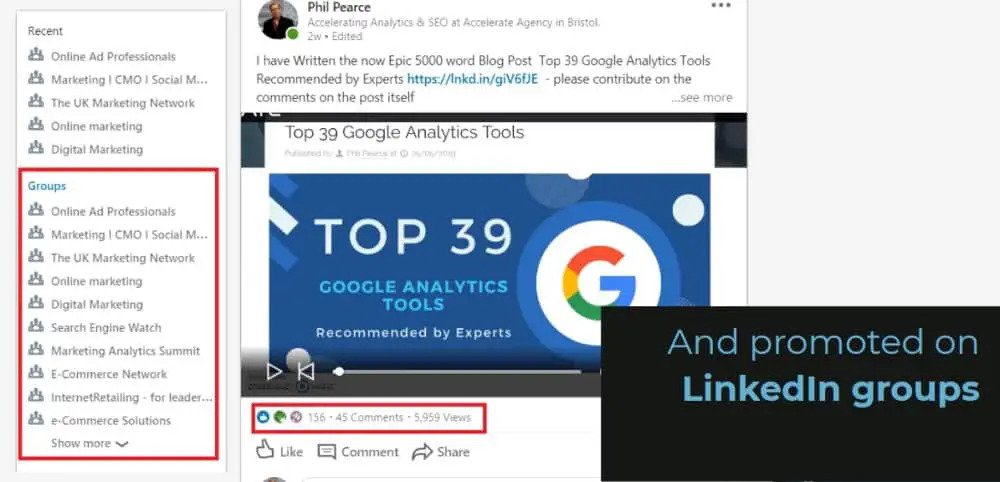
.
We got loads of interest in the blog post. It included many comments, reshares and messages about the content covered in the article. The level of interest was down to the way that LinkedIn allowed us to engage our network in the creation of the piece. As well as how efficient the platform’s group feature is for reaching people in your own niche.

Thanks to our use of LinkedIn, the blog post got close to 2,000 visits to the post in three weeks. That was a great return in terms of traffic to our blog. We weren’t quite done using LinkedIn to promote this blog post.
Our post had been viewed by many people and had clearly engaged our audience. So, we struck while the iron was hot.
We wrote another post saying how much Phil loved writing and did anyone want him to guest post for them.

We had some great responses

The response we got was immediate and positive. We received messages from a range of highly respected individuals in our field. Many offered brilliant chances to work with them. The beneficial partnerships we cultivated had a plethora of benefits. We got the chance to provide guest posts to high authority blogs and sites. Those guests posts then delivered those all-important backlinks from those sites.
LinkedIn has proven invaluable in allowing us to make the most of our content. It has helped us grow an audience engaged with our content. This has helped us generate traffic to the site, as well as generated guest posting opportunities. Using LinkedIn the same way and you could see the same results.
Effective LinkedIn Communication & Relationship Building
So far we’ve talked about using LinkedIn in two different ways. For increasing the number of visitors you get to your site and for promoting content. What you should also remember is that it’s a social network, so you can use it to be social. By that, we mean communicating with people and building relationships. Those relationships can then lead to great SEO opportunities down the road.
A super effective way to find relevant people to connect with is by using LinkedIn groups. There are loads of groups on the platform devoted to all kinds of different niches and areas. Finding and joining one is an ideal way to find other professionals in your niche. You’re sure to find plenty of groups relevant to your business, whatever that niche.
Joining those groups also makes it much easier to connect with different individuals. Having a group in common gives you something to mention in an initial message. It can work as a really good ice breaker to make that first connection.
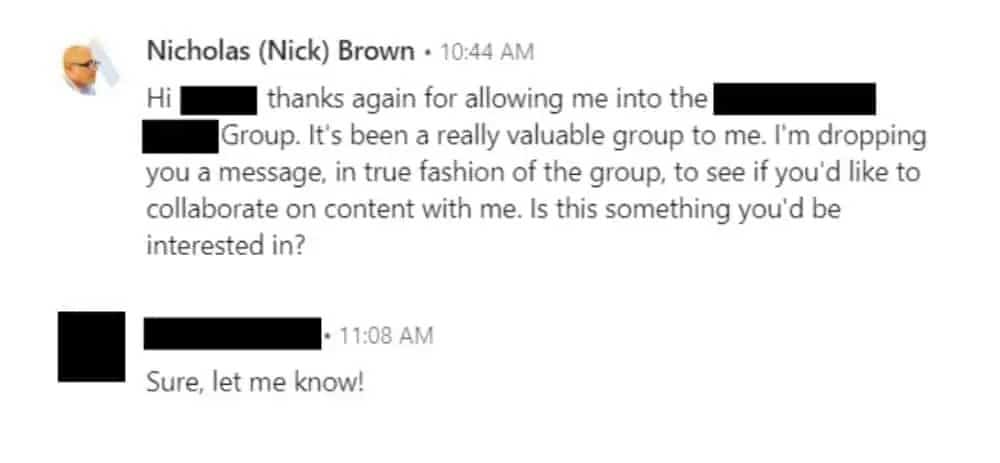
What’s more, messages sent via LinkedIn are so much more likely to be opened than other methods of outreach. The open rate for emails sent for cold outreach is only 21.8% according to recent statistics. That means over three-quarters of the people you contact never even read your message. It’s a different story with messages sent via LinkedIn.
The open rate for social media messages is much higher in general than emails. A personalised message sent to someone with whom you have a LinkedIn group in common is higher still. In fact, assuming the individual is active on the platform, the open rate is close to 100%. That means you’re so much more likely to make a meaningful connection.
What a meaningful connection could mean, is a beneficial relationship moving forward. Reaching out in this way via LinkedIn is great for connecting with bloggers. It can help you to find and secure guest posting opportunities. As well as other collaborations or partnerships. Those opportunities will have a massive positive impact on your SEO moving forward.
As useful as this method of outreach is, there are a few things to remember. They will ensure that you get the most out of your use of LinkedIn to build relationships:
- Avoid spamming connections – Don’t send random messages with content ideas to anyone and everyone. It will damage your credibility and alienate connections.
- Research group members – Look into each member of the groups you join. Find out if they’re really in your niche and how it may make the most sense to work with them. Don’t reach out to people who will have no interest in what you do.
- Make sensible content proposals – Do your due diligence when proposing content for guest posts. Make sure your ideas line up with the topics and tone of the blog or site you’re looking to contribute to.
